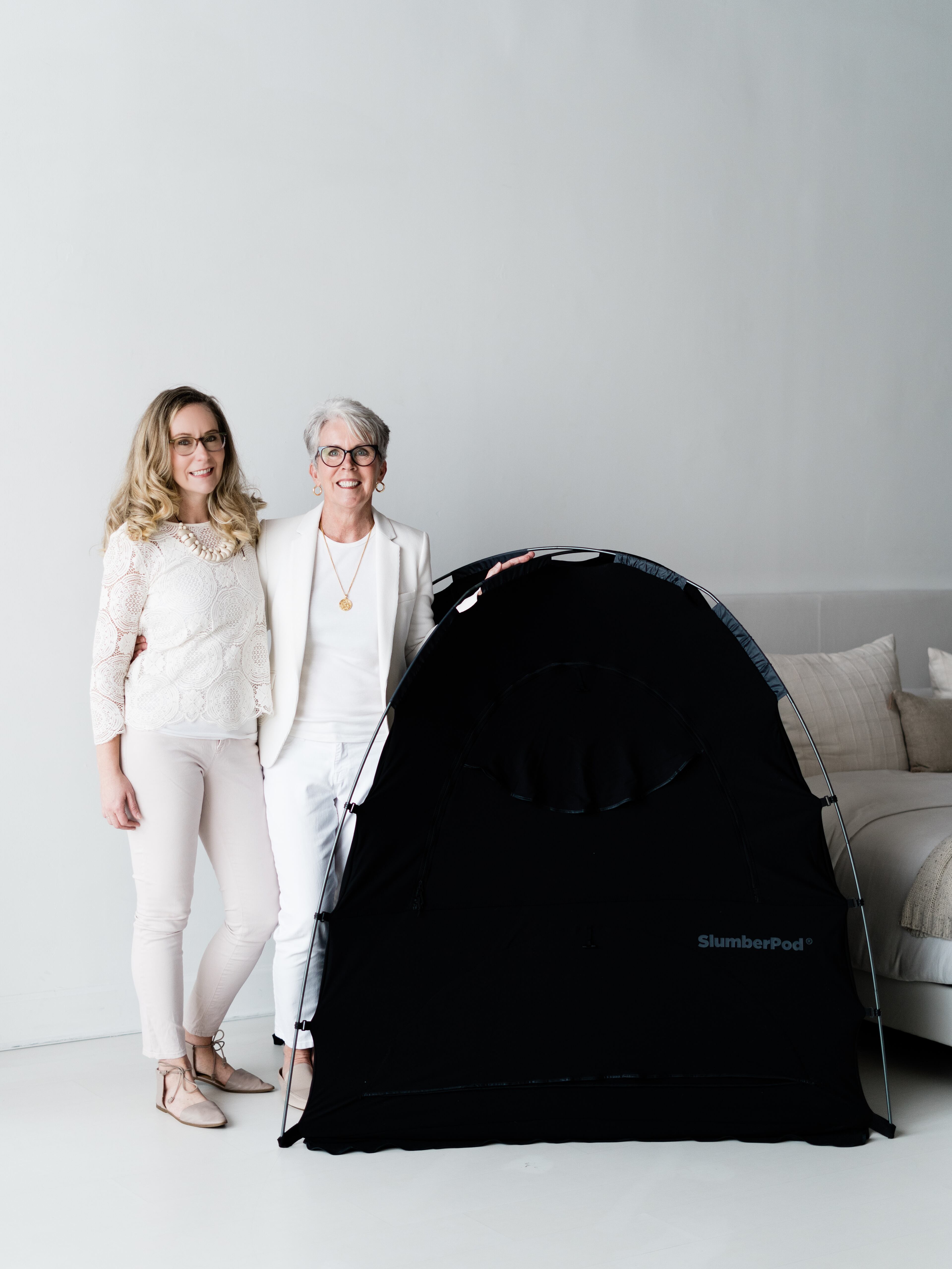Two Atlanta inventors solve sleepless nights for thousands of parents

Katy Mallory’s oldest daughter was 7 months old when Mallory and her husband, Dan Mallory, visited Katy’s parents’ home in December 2014. The couple soon realized their daughter’s sleep challenges would become their sleep challenges.
“The crib was set up a few feet from the bed, and there was a set of blinds on the main window right there, but they weren’t blackout enough to keep the light from coming in from the floodlight from the street lamp, and our child, who was a great sleeper at home, kept waking up, seeing us a few feet away, not being able to go back to sleep and completely struggling. And we struggled too, so we got two or three hours of sleep a night two nights in a row,” Katy told the AJC.
Bleary and irritable, the couple ended the visit early. Later, while planning an out-of-town trip and anticipating more sleep struggles, Katy looked online for a product to visually cocoon their daughter. She couldn’t find anything specific and ended up stringing a sheet between two camera tripods.
“Margo couldn’t see us during naps, but if the windows weren’t completely pitch black, it still meant a 5 a.m. wake-up. It still meant taking a nap while we were in the room was really tough,” Katy said.
And she wished the shaky setup was safer overall. The need for a different solution became even more evident when Katy found herself on maternity leave with twins a year and a half later. It was during that time her mother, Lou Childs, made a suggestion that would change their lives.
“She said, you know, these babies are sleeping a lot. Your oldest is at day care. Why don’t we get serious about inventing something that would solve that problem?” Katy said.

Solving a problem
Childs had recently experienced a layoff from her marketing job, so she had time. She stayed with Katy in her Decatur home as they developed the SlumberPod, a bottomless, tent-like structure that fit over standard-size playpens and created the visual barrier Katy had originally sought.
The enclosure could also fit an inflatable mattress or toddler cot, and there was a zippered window on one side. Safety was of utmost importance to the two who eventually had a CO2 rebreathing test done on the product for peace of mind. Katy and Childs had joined an accelerator program for entrepreneurs through Troy University with classes twice a week. After presenting to a Columbus audience at the end of the program, they found investors in summer 2016.
“Two local businessmen believed in what we were doing. We hardly had a prototype at that point,” Childs said.
The next steps
Nevertheless, things took off in the way most entrepreneurs only dream of. They took $240,000 in return for a total 24% stake in the company. The pair began selling on Kickstarter where they eventually surpassed their goal of 500 units at $149.99 each. They placed a second order and moved to Amazon by 2018. As 2019 dawned, they took another big step: a “Shark Tank” audition in Dallas, Texas. Show staffers, Childs said, were strict about keeping things buttoned up.
“‘You may think that we love you. We may ask a lot of questions. We may take pictures, and you may never hear from us again,’” she recalled hearing. “But if you do hear from us again, you cannot say a word. You will be disqualified if it gets out that you are on the path (to filming).”
The guidelines turned out to be necessary. Childs and Katy made it through an initial one-minute pitch and filmed a segment in June of 2019. It aired in January 2020 — after accepting a deal from Barbara Corcoran, which eventually fell through.
What they ultimately ended up with was a free commercial. COVID-19 hit shortly after the air date, and the spike in SlumberPod sales sank for a couple of months. By May, however, they’d skyrocketed. By summer, containers full of products were selling out in minutes.
“We were getting messages from people saying things like, ‘You ruined my vacation. I had it in the cart, and then it was gone,’” Katy said.
Those messages drove home the point: Customers were prioritizing the purchase.

A sale and a desire to give back
SlumberPod made $2 million in revenue in 2019, $4 million in 2020 and nearly $10 million in 2021. Katy and Childs decided to sell the company to Artica in 2022. It’s a result that’s allowed them both to step out of their former full-time jobs and pursue innovative goals.
Now, Katy is doing some consulting and marketing communications for other creators, and she’s also open to speak to local entrepreneur groups and classes. Childs is giving back through teaching marketing classes at the college level.
Katy credits her mother, now 67, with lots of the innovation behind SlumberPod.
“Even though I’m 25 years younger, she is the one who was looking at automation tools, whether that was for marketing or how to improve supply chain or how to pay state and local taxes. It’s really important that people don’t sell people with gray hair short as far as what their capabilities are,” Katy said. “She is so savvy, such a problem solver, such an early adopter … of technology. I’m 100% sure she propelled us to additional success and better profitability.”

